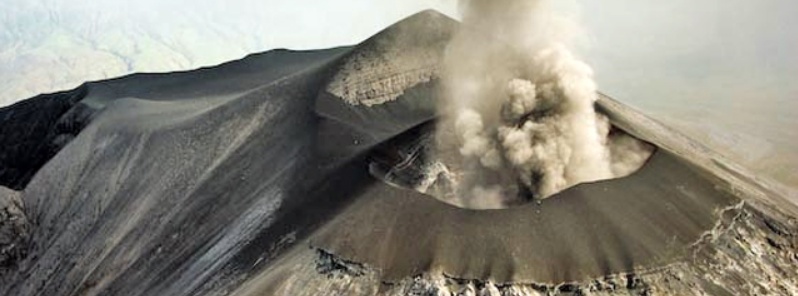Ol Doinyo Lengai volcano showing signs it may erupt, Tanzania

The Ol Doinyo Lengai, called the Mountain of God by the Maasai people is showing signs it may erupt. This is the only volcano in the world that sometimes erupts natrocarbonatite lava, a highly fluid lava that contains almost no silicon.
According to Al Jazeera's Catherine Soi, reporting from the foothills of the volcano, Old Doinyo Lengai is now threatening nearby villages and three major sites of early human development.
The last known eruptive phase of this volcano took place from April 9, 2017 to ~August 12, 2018. The previous eruptive phase lasted from June 22, 2011 to ~July 5, 2014.

Ol Doinyo Lengai volcano, Tanzania. Image copyright Oliver Konow

The symmetrical Ol Doinyo Lengai is the only volcano known to have erupted carbonatite tephras and lavas in historical time, according to the Global Volcanism Program.
Natrocarbonatite lava is much cooler than other lavas, being only about 510 °C (950 °F) compared to temperatures over 1 100 °C (2000 °F) for basaltic lavas. Natrocarbonatite is the most fluid lava in the world. Lava with a low gas content can flow like a whitewater stream, and actually has a viscosity near that of water. Natrocarbonatite lava glows orange at night, but is not nearly as bright as silicon-based lavas since it is not as hot.
This prominent stratovolcano, known to the Maasai as "The Mountain of God," rises abruptly above the broad plain south of Lake Natron in the Gregory Rift Valley.
The cone-building stage ended about 15 000 years ago and was followed by periodic ejection of natrocarbonatitic and nephelinite tephra during the Holocene.
Historical eruptions have consisted of smaller tephra ejections and emission of numerous natrocarbonatitic lava flows on the floor of the summit crater and occasionally down the upper flanks.
The depth and morphology of the northern crater have changed dramatically during the course of historical eruptions, ranging from steep crater walls about 200 m (650 feet) deep in the mid-20th century to shallow platforms mostly filling the crater.
Long-term lava effusion in the summit crater beginning in 1983 had by the turn of the century mostly filled the northern crater; by late 1998 lava had begun overflowing the crater rim.
Featured image: Ash eruption from Ol Doinyo Lengai seen on March 12, 2008 from the NNE. Photo by Benoît Wilhelmi, 2008.

great articles